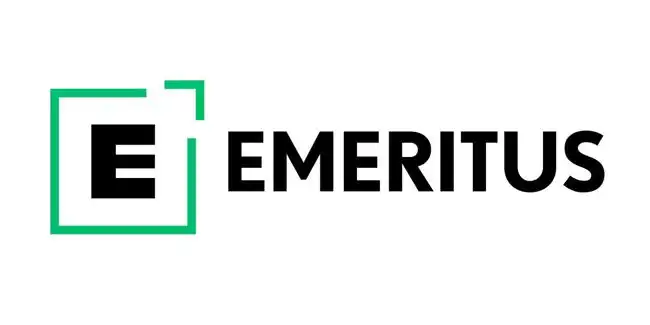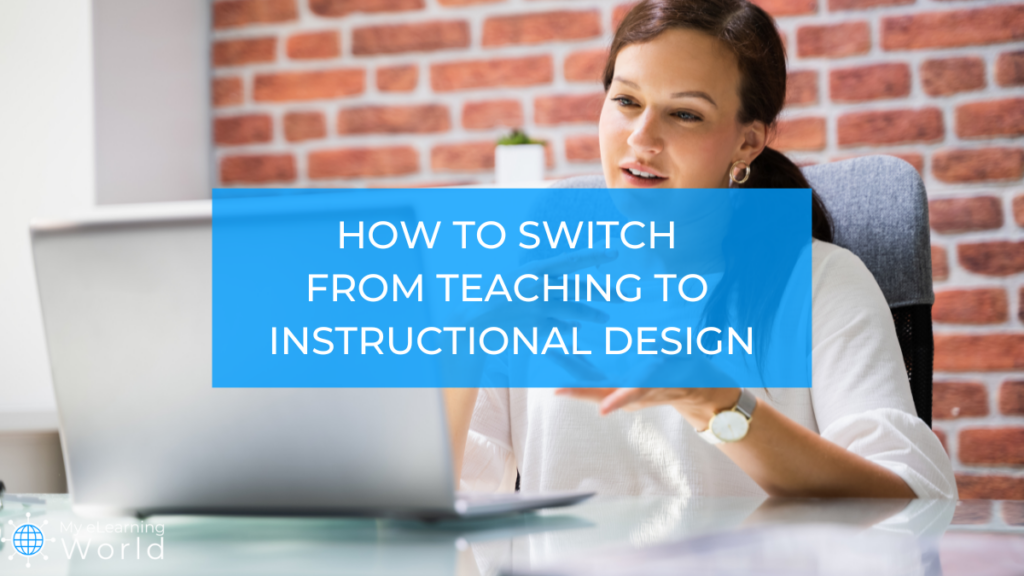Are you a teacher who’s looking for a new career opportunity? Are you one of the 55% of teachers who is thinking of leaving the profession earlier than you originally planned? Whether you’re burned out from teaching or just looking for something new, a career as an instructional designer might be perfect for you.
Making the transition from teacher to instructional designer can be intimidating, but with the right preparation and dedication, it is possible. In fact, the career pivot is probably easier than you might think. As someone who’s been in the ID industry for nearly 20 years, I’ve seen countless teachers seamlessly enter the profession and succeed.
In the guide below, I’ll outline the steps you can take to switch from being a teacher to becoming an instructional designer.
Why Change Careers from Teaching to Instructional Design?
Instructional design is a field that focuses on developing instructional materials and learning activities to support effective teaching and learning. Instructional designers use knowledge of instructional theory, technology, and best practices in order to create engaging, effective learning experiences for students, employees, and other members of the public in a range of settings from academic to corporate to nonprofits and more.
As a teacher, you may find yourself looking for new ways to impact education and a switch to instructional design might just be the opportunity you’ve been searching for.
With a focus on creating and implementing effective educational materials and experiences, instructional design offers a unique opportunity to influence the way students learn and retain information.
Another thing I love about this role is how it also allows for creativity and innovation, offering the ability to design lessons that are engaging and interactive.
Additionally, instructional designers have the opportunity to work with a variety of industries and subject matter, providing a chance to expand your knowledge and skill set.
Plus, with the growing need for remote learning opportunities, instructional designers are in high demand, providing an exciting and stable career path for educators looking to make a change.
And of course, the instructional designer salary potential is definitely attractive when compared to teaching.
All in all, if you’re looking for a career that combines your passion for education with ample opportunities for personal and professional growth, instructional design might just be the perfect fit.
Why Teachers Make Good Instructional Designers
Teachers have a unique set of skills that make them valuable in many fields outside of the traditional classroom setting, especially instructional design. They have the unique ability to analyze, plan, and deliver effective lessons to students on a daily basis.
With a deep understanding of how to spur students’ interest and help them understand complex topics, I’ve found that teachers are a natural fit for instructional design.
They know how to tailor their materials to meet the needs of their students while keeping them engaged and motivated.
Additionally, teachers have honed their organizational skills, ensuring their lesson plans are well-structured and their materials are easy to access.
Overall, teachers have excellent organizational skills, the ability to communicate complex ideas clearly, and a natural inclination toward creative problem-solving. Given these traits, teachers can easily transfer their skills into the realm of instructional design, and become highly effective designers in their own right.
How to Transition from Teaching to Instructional Design
If you’re ready to start transitioning into the field of instructional design, there are some important steps you’ll need to take.
Get the right training
 Emeritus Professional Instructional Design Certificate | Online Certificate Course
Emeritus Professional Instructional Design Certificate | Online Certificate Course
Gain firsthand expertise in instructional design principles and methodologies through this unique Professional Certificate program. Create impactful learning solutions and improve people's ability to learn.
The next class kicks off on October 22, 2024, so don't miss your chance to enroll now! Take advantage of early bird discounts leading up to the kickoff date:
20% off until September 3
15% off until September 24
10% off until October 15
The first step to transitioning from teaching to instructional design is to complete an ID certificate program or specialized degree program.
This will provide you with a foundation in the basics of designing educational materials as well as a chance to gain hands-on experience.
If you’re thinking about switching from teaching to instructional design, look no further than Emeritus and their Professional Certificate in Instructional Design.
This fully online program offers everything you need to earn a certificate and launch your career in this exciting field.
With knowledgeable instructors covering industry-relevant topics, you’ll gain invaluable insights into analytics and methodologies that will help you create impactful learning solutions for your students or colleagues.
This immersive 5-month program offers a deep dive into both the foundations and cutting-edge approaches of the learning design field, ensuring that you graduate with the skills and knowledge necessary to succeed in your new career.
You can kickstart your journey toward a fulfilling and rewarding career today with Emeritus.
Click here to learn more about the program and request a free brochure.
Find your area of focus
Instructional designers can work in a range of sectors, including corporate, education, healthcare, and government. They can also specialize in certain areas of the process, like content creation, planning, UX design, or technical development.
As a teacher, you may already have a good idea of the sector and area that interests you most. Take some time to research these different areas further and determine which option best suits your strengths and preferences.
It’s important to think about your strengths and interests when deciding which sector you want to specialize in.
You may want to focus on designing materials for the corporate world or developing educational content for K-12 or higher ed institutions.
Whatever area you decide to focus on, you’ll need to have a passion for learning and teaching, as well as an aptitude for technical skills.
Polish your resume
Once you’ve earned a certification or degree in instructional design, it’s time to update your resume.
As a former teacher, your instructional designer resume can really shine.
Highlight your related experience, such as classroom management techniques, lesson plan development, and any relevant projects you’ve completed.
In addition to traditional teaching experience, include any volunteer work or outside activities that showcase your ability to design and deliver effective instructional materials.
It’s also a good idea to create an instructional design portfolio online that you can link to in your resume and include samples of your work.
This will demonstrate your creativity and show potential employers that you bring a unique perspective to the field of instructional design.
Start networking
Networking is an important part of any career transition, so be sure to take full advantage of the contacts and networks you’ve built up over the years as a teacher. A lot of people I’ve come across in instructional design tend to overlook this.
Reach out to colleagues, former students, and other professionals in your field who can provide guidance and advice on how to make the switch from teaching to instructional design.
You’ll also want to start building relationships with employers in the ID field.
Attend industry events, join professional organizations, and connect with recruiters to start networking in the instructional design space.
These connections will be invaluable as you look for available positions or freelance opportunities.
Apply to Relevant Jobs
The field of instructional design is growing rapidly, and there are lots of job opportunities out there.
Be sure to apply to all applicable positions that you find online or are referred to by your contacts in the industry. There are lots of instructional design adjacent jobs out there, so be on the lookout for listings for more than just ID positions. Job listings for curriculum designers, learning and development specialists, and similar positions may also be worth applying to.
When interviewing for an instructional design position, don’t hesitate to share examples of past teaching experiences and relevant projects you’ve completed.
Highlight how your background as a teacher will enable you to make a successful transition into instructional design.
Final Thoughts
If you’re a teacher exploring new career possibilities, the field of instructional design is definitely worth a look. It’s a great way to use your knowledge and experience to design effective learning solutions for any audience.
With the right preparation and dedication, you can make a successful transition from teaching to instructional design and pursue an exciting new career in the field.
Have any questions about making the switch from being a teacher to becoming an instructional designer? Share them by leaving a comment below.


